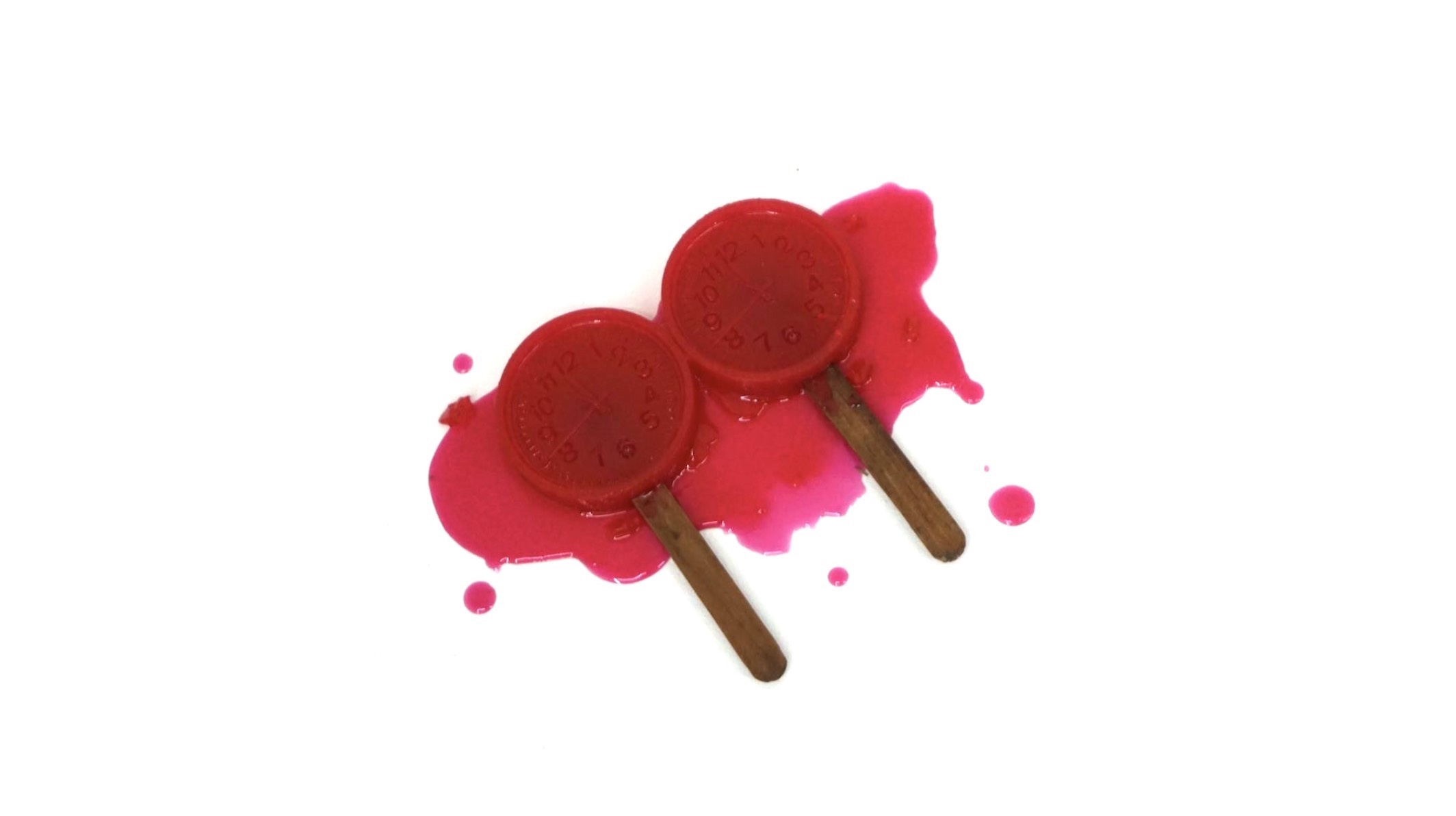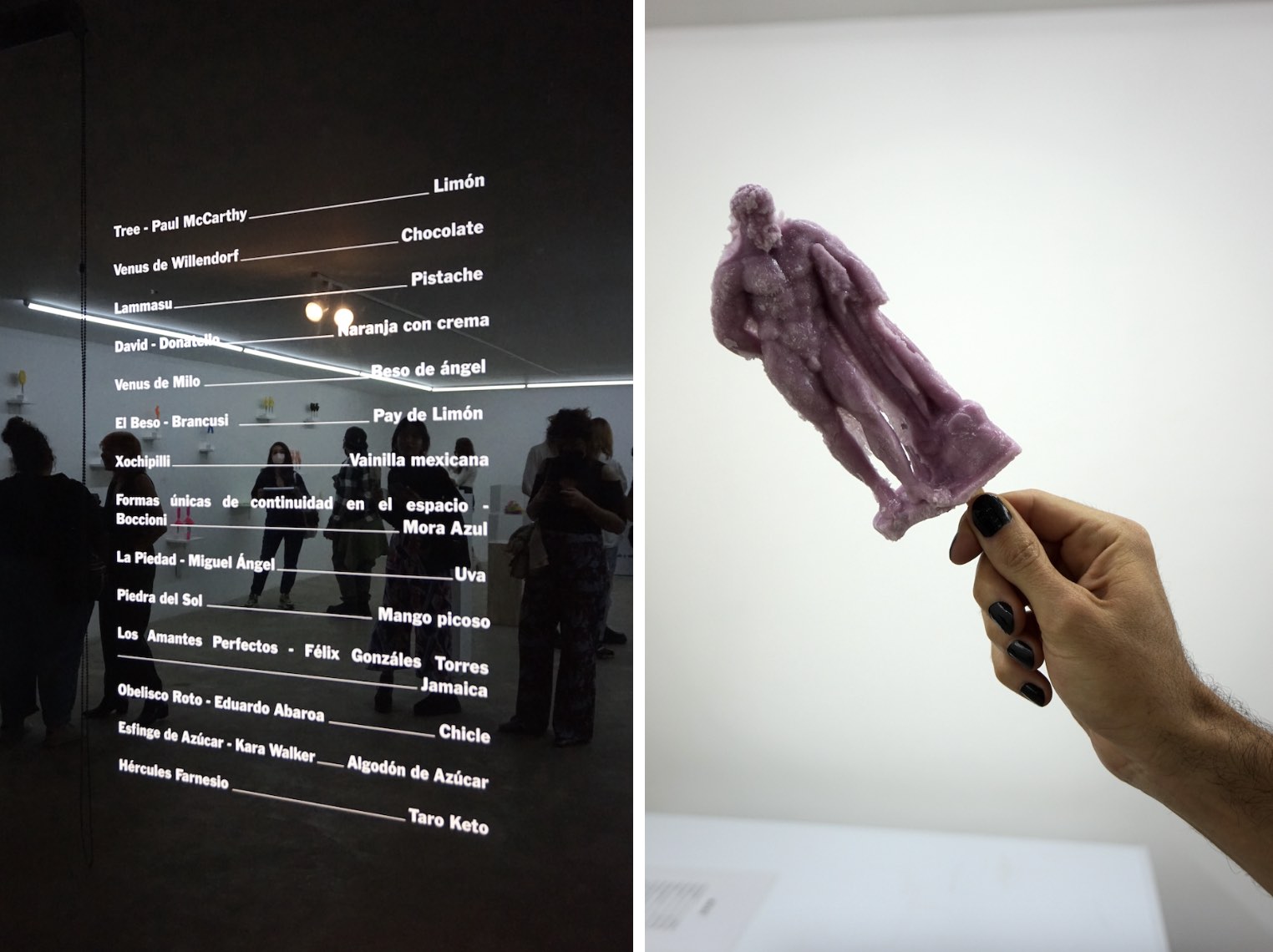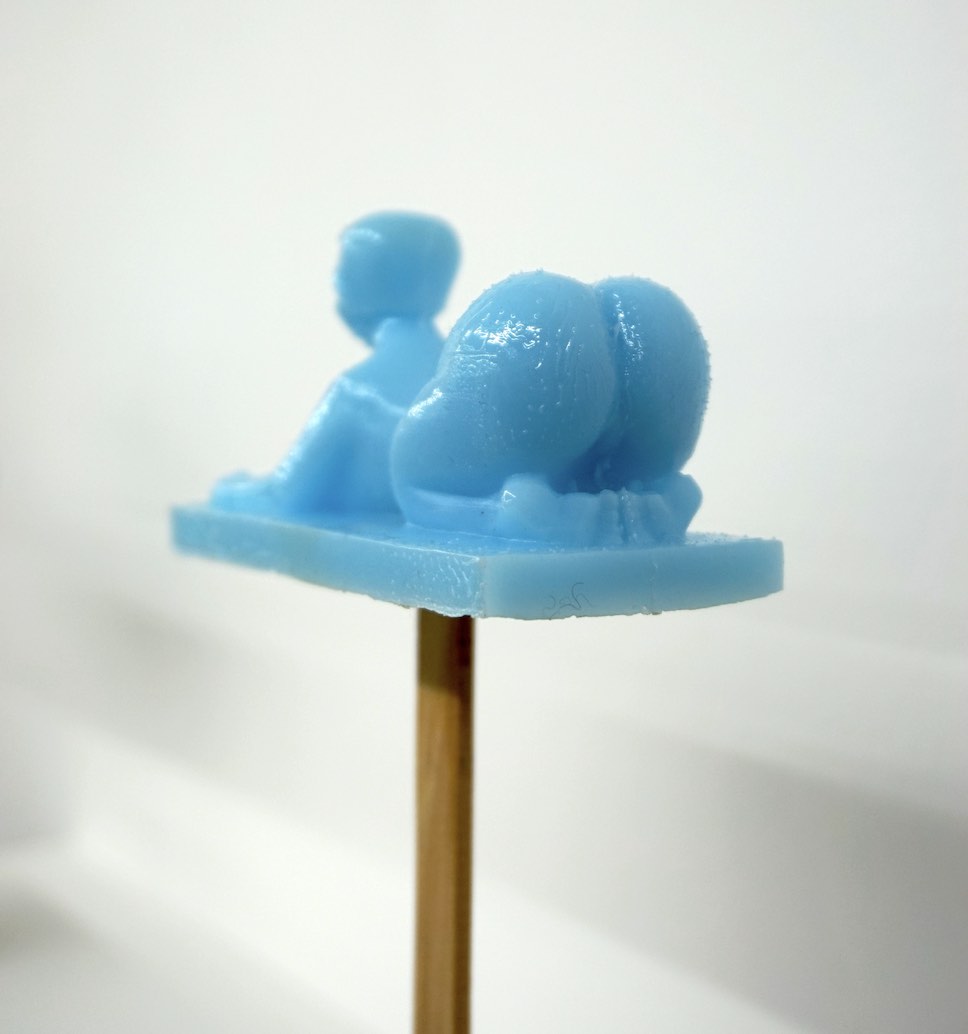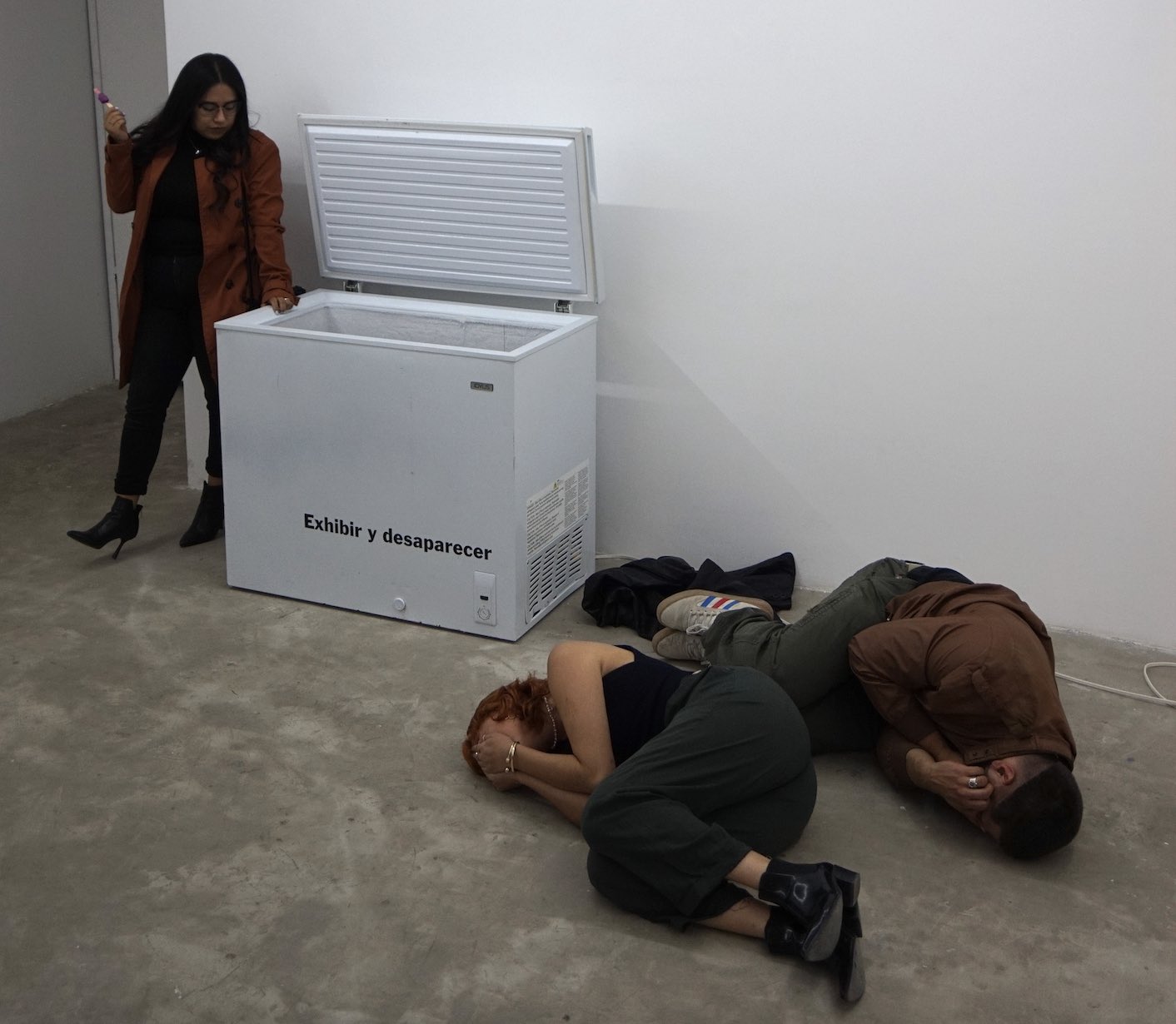
Review
Let Us Be Devourers of Art. "La delicia del objeto inmortal" by Gabriel Lengeling
by Yuriko Cortes-Salcedo
At Proyecto Caimán
Reading time
6 min
We’re at Gdl Art Wknd, before PREMACO, a moment when studios and galleries open up for those who travel to Mexico City for Art Week. Within this framework we see presented La delicia del objeto inmortal [The Delight of the Immortal Object], an edible and consumable exhibition project that plays an elemental reflective game against this circuit and its commodification.
The exhibition unfolds at Proyecto CAIMAN, a contemporary art exhibition platform that, thanks to the mediation of Raúl Rebolledo, has invited Dea López and Gabriel Lengeling as collaborators. Both of them have meeting points in their respective lines of work: food and its processes.
When talking with Dea López, curator of Co.merr, and with the artist Gabriel Lengeling, one glimpses collaborative work, the exploration of experience, and the importance of affects as key points in the project that in turn democratize art, making it accessible. The aim is not to acquire an object that protects the permanence of time, but rather to generate an experience in the viewer through the consumption of paletas that take the shapes of various sculptures relevant to the history of art. Among the replicated works are Eduardo Abaroa’s Obelisco Roto [Broken Obselisk], Kara Walker’s A Subtlety, the Sugar Sphinx, and Michelangelo’s David.
La delicia del objeto inmortal solicits reflections on the transcendence of the image today and its multiplicity in popular culture: what is often turned into a souvenir, in this case an edible one. The image that has transcended time is now multiplied and made available as an object of common consumption, accentuating both its visual character and its aesthetic values, in addition to the experience it generates: a gesture that encourages coexistence with others. The passive spectator becomes a participant in the exhibition; the body consumes the image and the space becomes a container of affects via social interaction.

The project was aided by the Scan the World platform, whose mission is to share 3D printable sculptures and cultural artifacts, using scanning technologies. According to its creator, Jonathan Beck, its goal is the democratization of the object. For this reason, Gabriel uses it as a base to make the food-grade molds for the sculptures that will become paletas. Some of the others have different outputs and are used to produce sculptures printed on ice or as supports for recording their dematerialization.
In the case of pieces made with ice, the figure is deformed until it becomes unrecognizable. This process is presented in a triptych of videos that record their disappearance. Both the sculptures in our hand—the paletas—and the ones on video melt; in the end both are destined to be consumed by either time or the viewer.

In the words of Dea López, this exhibition is based on the poor image: “Through the internet these images that come from museums—sculptures that are protected, cared-for, etc.—arrive at Scan the World, where they are distributed. The image is pixelated, reproduced, ripped, and then becomes ephemeral, until it disappears. The central discourse of this project is that it is an Instagrammable product.”
The exhibition offers elements that accompany the ephemeral sculptures’ relational action. Escultura como readymade, readymade como nieve, la nieve como escultura [Sculpture as Readymade, Readymade as Snow, Snow as Sculpture] is a bronze triptych that simulates snow cones in which we see protected works by three readymade artists: Robert Rauschenberg’s Monogram, Marcel Duchamp’s Fountain, and Gabriel Orozco’s Caja de zapatos vacía [Empty Shoe Box]. A variety for all tastes in American art. What do you want out of your work of art? Art to be carried away, art to be seen only as an object of consumption. The work has stopped containing critical meaning in order to be nothing but aesthetic. By representing milestones in the history of art as balls of snow, the work reflects on how those objects that once managed to transgress are now representations of economic power.

Bringing the exhibition to an end, at the center of the room one finds Dispositivos que retienen la imagen [Devices that Retain an Image], composed of two pedestals. The first, made of plaster, is designed to function as a display for the ephemeral sculptures. The paletas melt onto the plaster, which absorbs their color, yielding to involuntary dripping and thus turning the surface into a kind of record. The second consists of a wooden base with two acrylic boxes into which the paletas also melt. The process consists of waiting for the paletas to melt in the first acrylic box so that this melted sweetness falls into the second box below, repeating the process of the base that faces it and with which it is in dialogue. A processual image reminiscent of Hans Haacke’s Condensation Cube.
Gabriel Lengelin, beginning with the vision commonly held of contemporary art as an activity that consists of producing relationships with the world, poses the question: How do we consume art? We are regular visitors to exhibition spaces: we buy, we collect, we circulate. How is it that we are part of these interactions within the organism? These questions have resulted in the present exhibition.

What happens then when we go to the gallery and consume ephemeral sculpture? We become the work itself, as Piero Manzoni proposed in The Consumption of Dynamic Art by the Art-Devouring Public, in which he marked his fingerprints on hard-boiled eggs so that the public, by consuming them, would become “art.” Or it will simply be the right opportunity for bringing us closer to the art market by buying a work in this circuit, since its price is affordable. Let us then allow the action itself to respond to us by being participants and by recording it in our memories. Devouring the work of art—not only contemplating it, but also actively participating in it through the act of eating. Let us therefore be devourers of art across its entire spectrum, at all times.
The exhibition can be visited until March 3 by appointment via Proyecto Caimán’s social media accounts: @proyecto_caiman.
Translated to English by Byron Davies
Published on February 18 2022